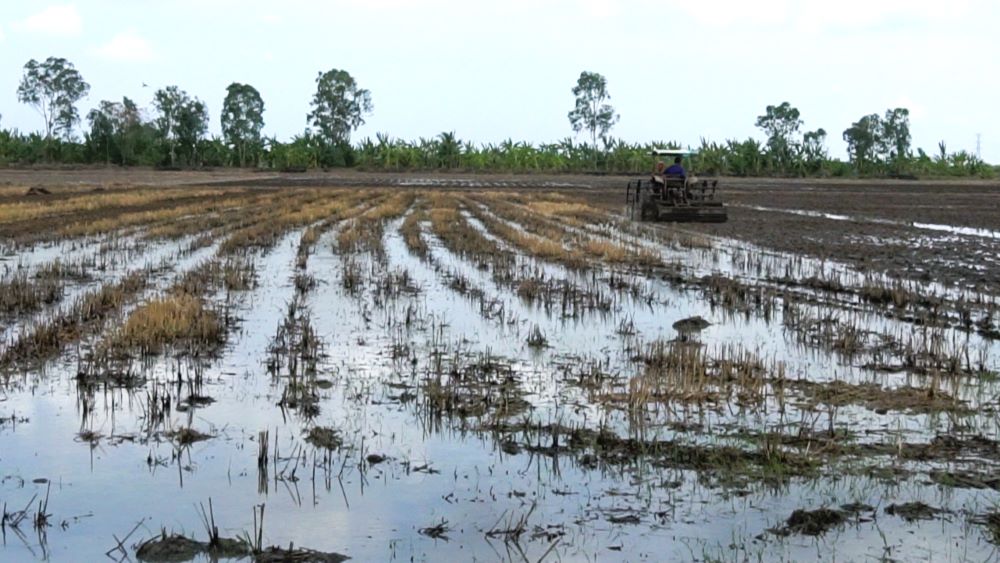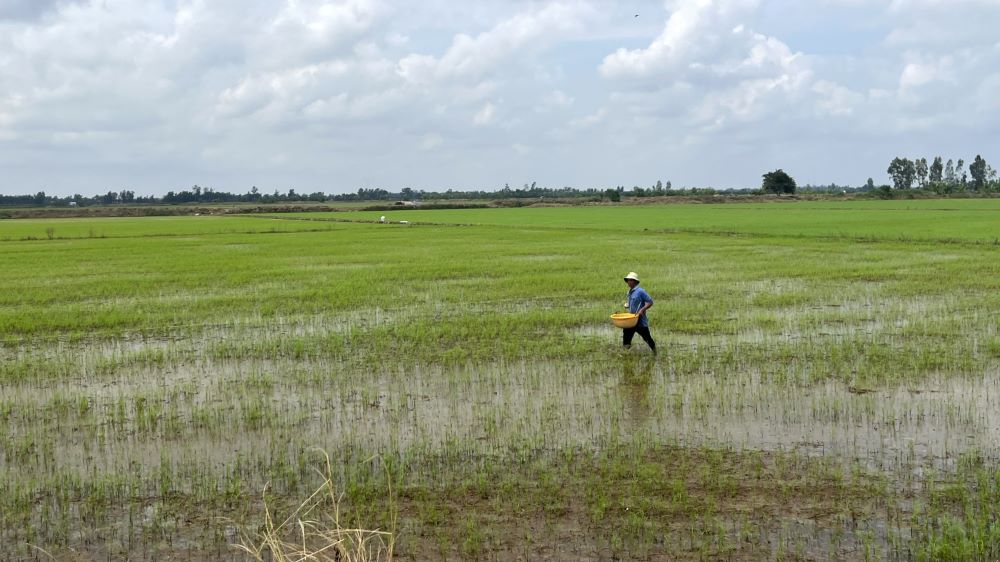From big profits to worrying about running out of capital
After harvesting 7 hectares of Dai Thom 8 rice variety in the autumn-winter crop, Mr. Tran Van Chanh (Vi Thuy district, Hau Giang province) earned a profit of 20 million VND, 3 million VND higher than last year.
However, the joy did not last long as Mr. Chanh began to worry about the next crop. The complicated weather, high tides, and unseasonal rains negatively affected the winter-spring rice cultivation process, causing costs to increase.

It is known that to sow the winter-spring rice crop, this farmer spent more than 10 million VND to prepare the fields, pump water, and store rice seeds even though the rice had not yet been planted. This amount is 2 million VND higher than the previous crop.
"Of the 20 million profit from the previous crop, half is spent on the next crop, the rest is for living expenses for the next 3-4 months. If we don't spend wisely, we could run out of money, and I don't dare think about Tet yet," said Mr. Chanh.
In Thoi Lai district, Can Tho city, after sowing 1 hectare of rice, Mr. Nguyen Van Mai had to stay in the field, buy and store gasoline in advance to promptly pump out water if there was heavy rain.
"Last year's rice crop cost low fuel, rice seeds, and fertilizer, so my output was low. This year's weather is erratic, and fertilizer costs are also high, so the cost is 2-3 million VND higher. Because the winter-spring crop is important because of its high yield, I have to spend a lot of money to take care of the rice," said Mr. Mai.
Proactively respond to drought and salinity
The National Center for Hydro-Meteorological Forecasting predicts that from December 2024 to May 2025, the water level at the headwaters of the Mekong River will gradually decrease and will be 0.1 - 0.2 m lower than the average of many years. Given the above situation, saline intrusion in the Mekong Delta in 2024 - 2025 is forecasted to be higher than the average of many years.
According to the Department of Agriculture and Rural Development of Can Tho City, the city plans to plant 72,100 hectares of rice in the 2024-2025 winter-spring crop. The first rice sowing schedule is expected to be from November 3 to 9 and the second sowing will be from November 25 to December 1. Farmers in the city will actively monitor the weather, and when the flood waters recede, they will sow early to avoid drought and salinity next year.

In Hau Giang, the province plans to plant 73,500 hectares of winter-spring rice in the 2024-2025 crop, with an estimated yield of about 552,320 tons. Farmers have completed the first sowing phase and planted more than 15,000 hectares.
In order to cope with the saline intrusion situation, farmers in the province have proactively chosen to sow standard rice varieties and certified rice varieties to increase the resistance of rice plants.
The provincial agricultural sector also recommends that farmers adhere to the sowing schedule in each period. For areas with closed dikes and complete drainage pumping systems, ensuring to avoid the impact of high tides in the last months of the year or areas at risk of saltwater intrusion, farmers in Hau Giang province will sow the first period; the second and third periods for the main winter-spring rice crop, low-lying areas where flood waters recede slowly every year must sow late.
Aiming to implement the action plan and respond to climate change on rising sea levels and saltwater intrusion, Hau Giang province has invested more than 183 billion VND from the central and local budgets to build a freshwater reservoir with a total area of 50 hectares in Vinh Tuong commune (Vi Thuy district, Hau Giang province), estimated to serve more than 260,000 households in Hau Giang during the dry season.










